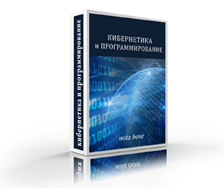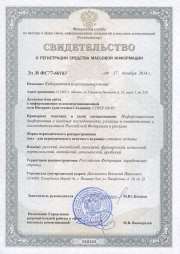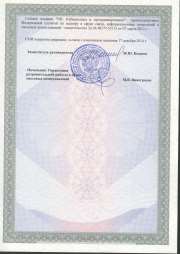MAIN PAGE
> Journal "Cybernetics and programming"
> Contents of Issue є 02/2016
Contents of Issue є 02/2016
|
Knowledge bases, intelligent systems, expert systems, decision support systems |
|
Mustafaev A.G. - The use of artificial neural networks for the early diagnosis of diabetes
|
|
pp. 1-7
|
DOI: 10.7256/2306-4196.2016.2.17904
Abstract: Diabetes is a chronic disease, in the pathogenesis of which is a lack of insulin in the human body causing a metabolic disorder and pathological changes in various organs and tissues, often leading to a high risk of heart attack and kidney failure. The author makes an attempt to create a system for early diagnosis of diabetes patients using the device of artificial neural networks. The article presents a model of neural network based on multilayer perceptron trained by back-propagation algorithm. For the design of the neural network the author used Neural Network Toolbox из MATLAB 8.6 (R2015b) which is a powerful and flexible tool for working with neural networks. The results of training and performance tests of the neural network designed show its successful application for the task and the ability to find patterns and complex relationships between the different characteristics of the object. The sensitivity of the developed neural network model is 89.5%, specificity of 87.2%. Once the network is trained it becomes a reliable and inexpensive diagnostic tool.

|
Data encryption and data protection |
|
Piskova A.V., Korobeinikov A.G. - Features of applying lattice theory in digital signature schemes
|
|
pp. 8-12
|
DOI: 10.7256/2306-4196.2016.2.17970
Abstract: The subject of the study is the scheme of digital signature, which is an important element in building secure systems used in most real-world security protocols. Reliability of existing schemes of electronic digital signature can be severely lowered in case of developments in classical cryptanalyst or progress in the development of quantum computers. A potential alternative approach is to construct the schemes based on the complexity of certain properties of the lattices, which are supposed to be intractable for quantum computers. Due to significant scientific advances in recent years, scheme based on lattice theory already used in practice and is a very viable alternative to number-theoretic cryptography. The study is based on the use of methods of lattice theory. This choice is dictated by the lack of solution of problem of finding the shortest vector or finding the nearest vector in polynomial time. The main conclusion of the paper is that the main area of future development in the schemes of the digital signature on the basis of lattice theory is their optimization and implementation of the Fiat-Shamir model in it. For example, Bliss scheme showed high performance and therefore it can be integrated into portable systems and devices.

|
Software for innovative information technologies |
|
Poriadin A., Oparin K. - Non-parametric model of learning for a system of diagnostics of psycho- physiological qualities
|
|
pp. 13-19
|
DOI: 10.7256/2306-4196.2016.2.18155
Abstract: The article studies support systems in field of diagnostics of person psycho-physiological qualities. The subject of the research is the use of neural networks in the development of tests for evaluation of the psycho-physiological state of a person. In this paper the authors examine the possibility of using neural networks to assess the psycho-physiological state of a person applying the achievements obtained by other researchers using neural networks to solve the problems of medical diagnostic, such as in the diagnosis of myocardial infarction or in recognition of emotions based on psycho- physiological parameters. The authors used mathematical modeling methods, such as methods of probability theory, mathematical statistics, artificial intelligence, methods of forecasting and decision-making. The study shows that neural network is an effective tool for the study of such stochastic systems as human. Using neural networks in systems of psycho- physiological diagnosis improves the accuracy of diagnosis by uncovering hidden relationships between different human systems. The ability to use neural networks for the treatment of psycho-physiological test results was confirmed using a generalized description of a neural network and examples of input and output neural network vectors for processing results of the test а reaction to moving object.

|
Telecommunication systems and computer networks |
|
Sukhikh A.V., Vasyaeva N.S. - The study of classifications of cluster systems
|
|
pp. 20-27
|
DOI: 10.7256/2306-4196.2016.2.18074
Abstract: The article addresses the issue of classification of modern cluster systems (clusters). The main objective of the study is to systematize the existing classifications of clusters and to determine a place for PCI Express standard based clusters in it. The goal is achieved by summarizing the existing classifications of clusters, allocation of important classification criteria among them and the introduction of new criteria for the classification of switching cluster systems. Besides, the authors give a detailed analysis of the situation in the classification of clusters of computer systems in general. To solve this problem the following methods were used: an analytical review of the known approaches to the classification of cluster systems and formal-logical method of classification. As the result of the research of known classifications of clusters and generalization of all of the above criteria, highlighting the especially significant and taking into account the new criteria, the authors suggest a general scheme reflecting both the position of all the clusters of computer systems in general and detailed classification within the clustered systems.

|
Mathematical models and computer simulation experiment |
|
Fatkhullin R.R., Sidorkina I.G. - Automated information system tool УMonitoring for regional assessment of education qualityФ
|
|
pp. 28-33
|
DOI: 10.7256/2306-4196.2016.2.18186
Abstract: One of the leading trends in the development of education in the world now is to create a comprehensive system of education quality assessment. Today a very urgent task is to develop an automated information system providing collection, storage and structuring information on the education system and allowing promptly processing and interpreting information on the education system. The article presents a “Monitoring of the education system in the Republic of Mari El” automated information system tool with integrated mathematical apparatus. The authors suggest an integrated model of comprehensive evaluation of the quality of regional education activities, allowing calculating the complex indicator of the quality of educational organizations within the cluster. Usage f the tool to assess the quality of the region solves a number of tasks such as complex automation of the collection, processing, analysis and consolidation of indicators and indicators monitoring in the region of the education system. It also provides information support for the implementation of regional policy in the region in the field of education.

|
Sechenov P., Tsymbal V., Olennikov A.A. - Simulation model of separation of components of manganese production dust
|
|
pp. 34-41
|
DOI: 10.7256/2306-4196.2016.2.18133
Abstract: The subject of the research is the choice of technology, structure and algorithms of software implementation of simulation model of separation of components of manganese production dust. The authors choose an object-oriented programming language, ActionScript 3.0 for the implementation. The study reveals the relationship between the main unit and the classes of the program (such as classes representing condensed particles, calculation functions, graphs display etc). For each class, the authors show the main features, purpose, input and output parameters of the function. The study reviews in detail the main unit function, which includes interaction and calls of procedures and functions within the main module, and with the functions and procedures of the selected classes. The method of research is the simulation method (Monte Carlo), which allows the object being studied with the knowledge of mechanisms on the basis of chance playing, to construct an algorithm. The paper presents simulation model of separation of components of manganese production dust, which makes it possible to: input initial parameters, observe the motion of particles in a gravitational separator and display the statistical data and real-time graphs, study on the model and selection of the optimal parameters based on separation efficiency coefficients. The model can be used in the design of gravity separators, predicting the performance and efficiency of the separation.

|
Automation of manufacturing and production planning |
|
Lyachek Y.T., Alkadhi L.J. - Methods of creating parametric models of the geometric object in the modern CAD
|
|
pp. 42-51
|
DOI: 10.7256/2306-4196.2016.2.18097
Abstract: The research is focused on methods for creating parametric models of geometric objects used in modern CAD, which provide an effective modification of the descriptions of the objects of design. The authors select three approaches to creating parametric models: preliminary, parallel and subsequent parameterization. The paper describes the application of models of each type, its characteristics ad means by which they are formed. The authors note that preliminary or software models are used for the formation of the simple design of objects and drawings of design elements. Parallel methods of formation are the most common when creating graphic images of flat and three-dimensional objects of arbitrary configuration. Subsequent parameterization is used to generate parametric models of previously created design drawings. To create the latter type of models an automatic generation of basic key elements of the image grid is used. The elements adaptively change depending on the size designations assigned new values used in the original description of the drawing. As a method of study the authors use comparative analysis of different parameterization systems, allowing to identify the main approaches used in them in the formation of various types of parametric models of graphic objects. The novelty of the approach proposed by the authors of modern parametric classification systems is in the ordering of the various areas of parameterization as well as methods and means used to create a variety of parametric models depending on the time of its creation and the relation of building the corresponding image. Under this approach, it is easily to view and compare all kinds of CAD, regardless of the specific approaches and tools for creating geometric models used in these systems.

|
Educational software systems |
|
Raeckiy A., Shlyanin S., Ermakova L. - The development of "Portfolio SibGIU" plug-in for УMoodleФ learning management system
|
|
pp. 52-61
|
DOI: 10.7256/2306-4196.2016.2.18016
Abstract: The object of the research is electronic portfolio of a student, the subject of the research is development of an information system allowing to form an electronic portfolio characterizing individual achievements of a student in six areas of activity: "Educational activities in primary education program"; "Research activities"; "Other educational achievement"; "Social activity"; "Cultural and creative activity"; "Sports activities". Efficient operation of the information system required differentiation of access permissions for different user groups: students, portfolio moderators and administrators. The information system is implemented as a separate module, plug-in for “Moodle” learning management system. At creation an information system "Portfolio SibGIU" authors used deduction method, in which for a variety of private signs a conclusion about the common set of studied attributes is made. The authors also analyzed existing plug-in “Exabis EPortfolio”. The main result is the development and implementation of "Portfolio SibGIU" information software system, which is currently being used and is a part of the electronic educational environment of Siberian State Industrial University. An important feature of the system is a dynamic formation in the portfolio in the "Educational activities in primary education program" category by synchronizing uploaded to Moodle works (files) of a student, the results of passing the tests in Moodle and reviews and final grades on completed assignments given to a student by a teacher in Moodle e-course. Using of the information system showed that the work with the system does not pose any difficulties for the students or for the moderators. The student is able to upload the documents confirming personal achievements in various fields into the portfolio. Every student action is reviewed by a moderator, which improves the quality of content and helps avoiding errors in the formation of the portfolio. "Portfolio SibGIU" information system meets the requirements of the FGOS 3+ and provides the accumulation, classification and registration of a set of electronic documents describing the student's individual achievements in various fields of activity.

|






